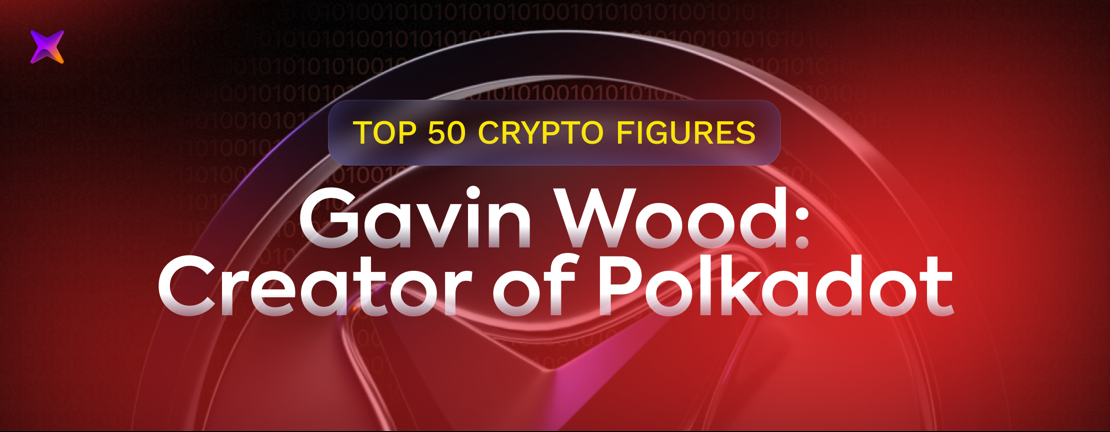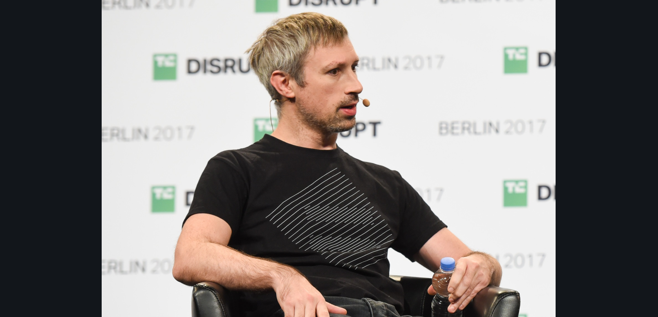Published 19 Jul 2025
Ratex.ai/
- Blog/
- Research/
- Gavin Wood: The Engineer Behind Ethereum’s Yellow Paper and the Creator of Polkadot
Gavin Wood: The Engineer Behind Ethereum’s Yellow Paper and the Creator of Polkadot

Gavin Wood left a huge mark on crypto. He shaped its foundation in big ways. He wrote Ethereum’s Yellow Paper, which explained its design. He also created Solidity, the programming language that powers smart contracts. Later on, he launched Polkadot — a blockchain aimed at solving Ethereum’s limits.
Right now, Wood stands as a key voice in Web3, an idea to build a decentralized internet where users hold control. His contributions set the stage for smart contract systems, blockchain collaboration across chains, and the larger movement to keep digital power in people’s hands.

Photo of Gavin Wood sourced from Wikipedia.
Early Life and Education
Gavin Wood arrived into the world in April 1980 in Lancaster England. At the University of York, he studied computer systems alongside software engineering and went on to earn his PhD. His doctorate research explored ways to show audio combining programming skills with creative ideas. This blend of interests would later shape his work in blockchain.
Before entering the crypto space, he spent time at Microsoft Research and worked on his own projects. He created tools like a smart lighting controller and a legal document editor. He focused on building practical tools that worked rather than following trends or hype.
Ethereum: The Yellow Paper and Solidity
In 2013, Gavin Wood met Vitalik Buterin. The two quickly began working together with a small group developing Ethereum. While Buterin concentrated on the big-picture vision, Wood stepped into a role centered on structure and turning the ideas into reality.
In 2014, he published the Ethereum Yellow Paper, which was the first technical document detailing the Ethereum Virtual Machine (EVM). Unlike a casual blog or whitepaper, this was a strict and detailed paper using formal math and code. It laid out precise rules for how Ethereum should function letting developers across the globe create compatible tools and clients.
That wasn’t his only contribution. He also developed Solidity, which became Ethereum’s main programming language. Solidity now runs every decentralized app and smart contract on Ethereum, including everything from NFT projects to DeFi systems.
He worked as Ethereum's first CTO and played a major role in launching the network in 2015. By 2016 though, he had moved on. While Ethereum concentrated on improving what was already in place, Wood was imagining how blockchains could grow into systems that were more scalable, adaptable, and connected in every sense.
Parity and the Web3 Foundation
After parting ways with Ethereum, Gavin Wood founded Parity Technologies (named Ethcore) in 2015. His mission was straightforward: to create blockchain infrastructure that was faster and more secure. One of Parity’s key milestones was developing a high-speed Ethereum client coded in Rust known as Parity Ethereum. It soon became one of the most -used clients on the Ethereum network.
But Wood aimed for more than just improved performance. He wanted to transform how the internet operates. To achieve this, he established the Web3 Foundation, a non-profit dedicated to building a decentralized web where individuals, not companies, control their data and personal information.
That's the origin of the term “Web3”. Gavin didn’t create decentralization itself, but he gave it purpose, structure, and a clear goal.
At a time when most people were still stuck on single-chain blockchains or focused on token trading, Wood was already designing the groundwork for a multi-chain future. His vision imagined blockchains connecting and interacting, not existing as separated systems.
Polkadot and Kusama
In late 2016, Gavin Wood came up with Polkadot as his answer to the challenges Ethereum couldn’t address. Polkadot wasn’t designed to be just an improved Ethereum. It revolved around a fresh concept: blockchains don’t have to compete but can work together instead.
Polkadot relies on a Relay Chain as its central hub and links to several parachains. These parachains act as independent blockchains that operate side by side but still share security and can communicate with each other. This setup helps enable scalability, adaptability, and easier communication between chains. It avoids the traffic jams Ethereum was running into.
To test projects in a live environment, Wood set up Kusama — an experimental network designed to stay a step ahead of Polkadot. This network allows developers to push updates and try out new concepts in real-world conditions before moving them to the main network.
Polkadot launched in 2020. Earlier, its initial coin offering had raised more than $144 million marking one of the largest funding rounds in the cryptocurrency space at the time. Since then, it has developed into one of the most sophisticated blockchain ecosystems supporting DeFi, NFTs, DAOs, and other applications.
Wood focused on more than just creating tools. He came up with a framework to reshape how decentralized networks can grow — encouraging open collaboration and ensuring these systems are not tied to a single blockchain.
Vision and Beliefs
Gavin Wood doesn’t just focus on writing code. He works from a foundation of ideas. His main belief is simple: people should own their data, their identity, and their tools. This belief forms the heart of his vision to build Web3, an internet that gives power back to users and takes it away from big centralized platforms.
He criticizes the crypto world’s obsession with short-term trends. To him, blockchain isn’t about prices or flashy marketing. He sees it as a way to create lasting systems — ones that stay strong, remain open-source, and avoid control by corporations.
Wood thinks the internet is broken in its current form. A small number of big companies control too much. Many systems base their functioning on trust, which can be misused. He sees Web3 as the solution to fix these problems — not just in finance, but also in the way people connect, work together, and interact online.
In real-world matters, he’s made bold moves. In early 2022, as Ukraine faced an invasion, Wood gave $5.8 million worth of DOT tokens to help the Ukrainian government. This wasn’t done for attention; it matched his belief in personal freedom, open systems, and self-sovereignty.
Where He Stands Now
By 2025, Gavin Wood remains a key figure in Polkadot’s development but has stepped away from handling daily management tasks. Back in 2022, he gave up his role as CEO of Parity Technologies. Instead of leading operations, he decided to concentrate on technical advancements and designing long-term infrastructure. He hasn’t abandoned the project. Instead, he shifted into a position that suits him better — creator rather than administrator.
He influences Polkadot's progress through projects like Asynchronous Backing, which aims to increase block production speed, and XCM, a tool designed for secure communication across chains. These enhancements reflect Polkadot's efforts to scale up and compete with other blockchain ecosystems.
Some sources estimate Wood’s net worth to be between $400 million and $900 million, much of it tied to DOT, KSM, and his shares in Parity. He isn’t the kind of public figure who seeks attention. He stays out of the influencer spotlight and gives interviews. Instead, he focuses on writing code, sharing research, and speaking at events for developers. His work now is the same as always: creating systems built to endure rather than following fleeting trends.
Conclusion
Gavin Wood might not be the most outspoken figure in crypto, but his influence is massive. He didn’t just contribute to creating Ethereum; he shaped the way it functions. He didn’t stop at building a blockchain; he reinvented how blockchains connect with each other. And he didn’t just discuss decentralization; he created the tools to turn it into reality.
From the Yellow Paper and Solidity to Polkadot and the concept of Web3, Wood has shaped the backbone of the crypto world. His work isn’t fueled by hype. It’s designed to lastly built to serve developers, systems, and the future of space.
In a world buzzing with distractions, Gavin Wood keeps his attention on the basics. He moves the industry ahead with engineering clear goals, and intention rather than chasing hype or guesswork.
This focus is why people still see him as one of the most trusted and impactful figures in crypto right now.
Read More




 Get RateX Pro
Get RateX Pro
 06 Jun 2024
06 Jun 2024
